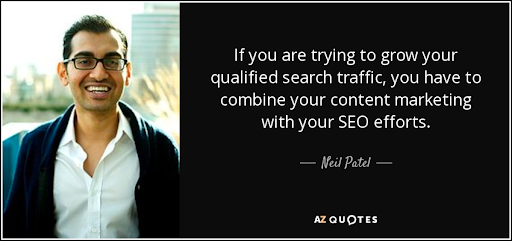Table of Contents
Introduction
The e-commerce SEO landscape in 2024 is becoming more advanced, thanks to search engine algorithm updates, advancements in AI, and evolving user expectations. With the rise of voice search and visual search technology, e-commerce websites are now focusing on optimizing for new search methods.
For businesses aiming to capture and retain digital attention, staying ahead requires embracing foundational e-commerce site SEO strategy principles and new trends. Utilizing schema markup, optimizing for voice search, and prioritizing mobile optimization are crucial components of a successful e-commerce SEO strategy in 2024.
Additionally, focusing on creating high-quality, relevant content that provides value to users will be essential for maintaining visibility and driving organic traffic to your online store. In this blog, we will discuss the top strategies that eCommerce businesses should consider to rank higher, convert better, and meet customers where they are in 2024.
Prioritize Search Intent Over Keywords
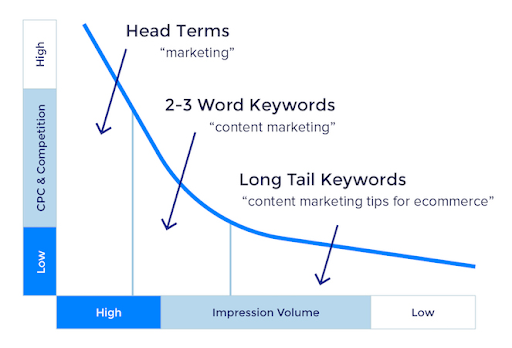
Search intent is what a user is looking for when they type a query, which is the primary focus for search engines. It’s essential to structure your content to meet user needs whether they’re searching for information, products, comparisons, or direct purchasing options.
- Focus on Search Intent Categories: Google emphasizes different types of search intents, which are informational, navigational, commercial, and transactional. Ensure your content satisfies these intent types by answering questions, showing related products, and including calls to action that move users down the purchasing funnel.
- Long-Tail Keywords: Target specific, longer keywords that address buyer concerns or unique product features. Instead of focusing solely on “wireless headphones,” go deeper with phrases like “wireless headphones with active noise cancellation under $25.”
Integrate AI-Powered Content Creation and Optimization for e-commerce Website SEO

AI tools are transforming how eCommerce brands generate and optimize content, and 2024 is the time to embrace them.
- Use Generative AI: Content generation tools like Chatgpt and Jasper can help write product descriptions, blog content, and even tailored meta descriptions at scale. To make content unique, edit as it reflects your brand’s tone and expertise.
- Dynamic Content Adjustments: Leverage AI to adapt page content based on user behavior and current trends. For instance, seasonal adjustments or promotions that respond to user interactions can increase engagement and conversion rates.
Optimize for Voice Search
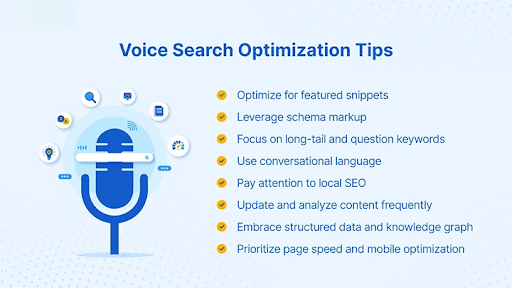
Voice search continues to grow in popularity, especially as mobile device and smart home speaker usage expands. To capture voice search traffic, it’s important to analyze your keyword and content strategy.
- Conversational Keywords: Consider how people phrase questions when speaking rather than typing. Include phrases like “Best place to buy [product] near me” or “How do I choose the right product?”
- Featured Snippets & FAQ Sections: Many voice queries pull answers from featured snippets. Structure content with clear headings and concise answers to common questions about your products.
Implement Structured Data & Schema Markup
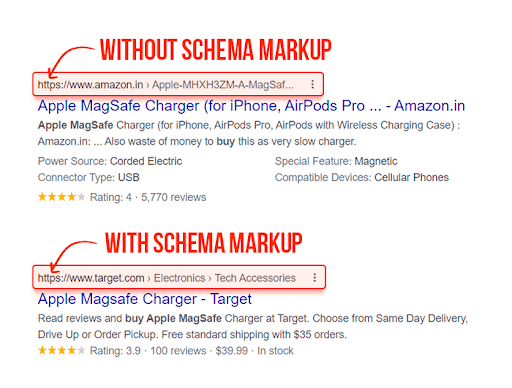
Structured data helps search engines better understand your site’s content, which can improve how your pages are displayed in search results with marketing ecommerce SEO.
- Product Schema: Product-specific schemas, such as price, availability, and reviews, can help search engines deliver more precise product information, increasing visibility.
- Review Schema: Displaying reviews in search results helps build trust and can lead to higher click-through rates. Properly marked-up reviews encourage users to engage, especially when they see positive feedback right from the search results page.
Mobile-First Indexing and Core Web Vitals
Google continues to prioritize mobile-first indexing, meaning your site’s mobile version is what’s assessed for ranking. Additionally, Core Web Vitals (CWV) now directly impact search rankings, measuring a site’s loading speed, interactivity, and visual stability.
- Optimize for Mobile UX: Make mobile user experience a top priority. Ensure navigation is smooth, images are optimized for quick loading, and buttons are easy to click.
- Meet Core Web Vitals Standards: Prioritize improvements in Largest Contentful Paint (LCP), First Input Delay (FID), and Cumulative Layout Shift (CLS) to improve both user experience and search rankings.
Embrace Visual Search Optimization
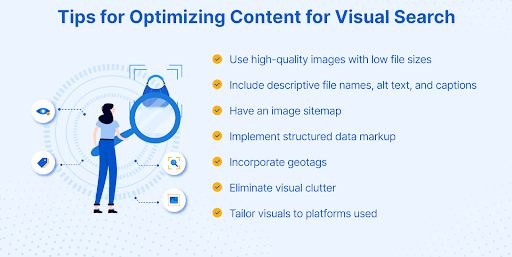
Visual search technology is changing the way consumers shop online, with platforms like Pinterest and Google Lens leading the way.
- Optimize Image SEO: Use descriptive alt text and compress images without sacrificing quality. Clear product images are essential for appearing in image search results for e-commerce SEO.
- Utilize Visual Search Tools: Make sure your products are discoverable on visual search platforms. This is especially helpful for fashion, home decor, and other visually driven markets where customers may search by simply uploading a photo.
Content that Embraces E-E-A-T
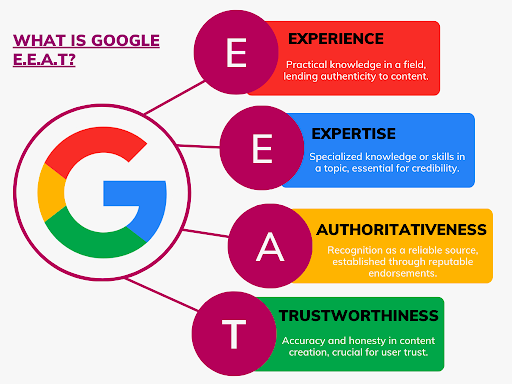
Experience, Expertise, Authoritativeness, and Trustworthiness Google’s E-E-A-T framework emphasizes the importance of reliable, authoritative content. In an e-commerce SEO company, building trust through your content can significantly impact both SEO rankings and conversions.
- Focus on Authenticity and Trust: User-generated content (UGC) like reviews, photos, and testimonials showcases real-life experiences and can reinforce brand authenticity.
- Highlight Expertise: Create content that reflects your authority in the industry, such as buying guides, comparisons, and how-to content that positions you as a reliable source.
Use AI-enhanced personalization and Product Recommendations
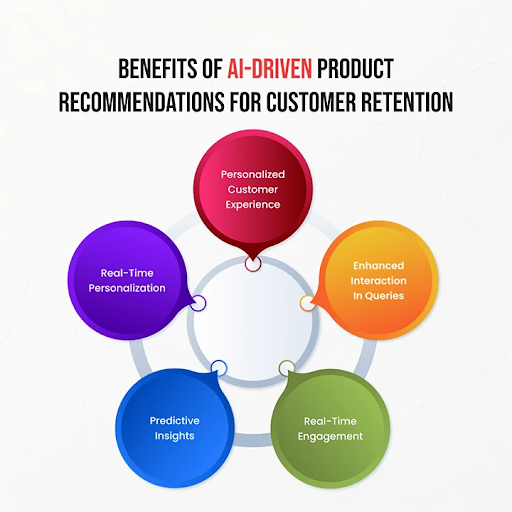
AI-based personalization creates a more engaging shopping experience, which can increase conversion rates and customer loyalty.
- Implement Product Recommendations: Use AI algorithms to display personalized product suggestions based on the user’s browsing history, enhancing their shopping experience.
- Dynamic Retargeting Ads: Retargeting ads that respond to customer behavior on your site can help convert browsers into buyers. Personalized emails based on user actions, like abandoned cart emails, are also effective.
Build Content Clusters for Topic Authority
A content cluster like e-commerce SEO strategies allows you to establish your site as an authority on a specific topic, helping search engines view your site as an in-depth resource.
- Create Topic Clusters: Organize your content around central themes (such as “smart home tech” or “sustainable fashion”) with interconnected pages that build out those topics.
- Optimize Internal Linking: Connect your content clusters with thoughtful internal linking, guiding users along related content and improving SEO for e-commerce websites.
Leverage Social Proof and UGC
Social proof is invaluable in SEO site e-commerce. Customers often trust reviews and testimonials over brand-generated content.
- Showcase User-Generated Content: Use authentic customer reviews, photos, and videos on product pages. This can help build credibility, especially for new customers.
- Integrate Social Media Content: Integrate your social media presence to showcase UGC, engage customers, and build community. Social profiles also add authority and visibility to your brand.
Optimize for Local SEO if You Have Physical Locations
Local SEO is essential if your eCommerce business has brick-and-mortar locations in specific regions.
- Google Business Profile: Keep your profile updated with accurate hours, address, and product details. Encourage satisfied customers to leave reviews.
- Location-Specific Keywords: Include location-based keywords to capture “near me” searches, which can help drive local traffic and build regional brand presence.
Tap into Video Content for Higher Engagement

Video continues to capture attention and can be particularly engaging for showcasing product features or tutorials. Utilizing video content on social media platforms can help increase user engagement and drive more traffic to your website.
- Short-Form Videos & Reels: Platforms like TikTok, Instagram Reels, and YouTube Shorts offer opportunities for short product demos, user testimonials, and educational content. These platforms cater to audiences with shorter attention spans, making them ideal for capturing interest quickly.
- Optimize Video SEO: Use target keywords in video titles, descriptions, and tags, and embed videos on relevant product pages to increase on-site engagement. Additionally, creating eye-catching thumbnails and utilizing closed captions can also improve visibility and accessibility for a wider audience.
Conclusion
With these strategies, eCommerce businesses can build stronger brand visibility, improve customer engagement, and meet the evolving demands of SEO in 2024. Balancing user-focused content, AI-driven tools, and a solid understanding of current e-commerce site SEO strategy will put your brand ahead of the competition. And ensure you’re ready to meet the future of online shopping head-on.
Deepak Wadhwani has over 20 years experience in software/wireless technologies. He has worked with Fortune 500 companies including Intuit, ESRI, Qualcomm, Sprint, Verizon, Vodafone, Nortel, Microsoft and Oracle in over 60 countries. Deepak has worked on Internet marketing projects in San Diego, Los Angeles, Orange Country, Denver, Nashville, Kansas City, New York, San Francisco and Huntsville. Deepak has been a founder of technology Startups for one of the first Cityguides, yellow pages online and web based enterprise solutions. He is an internet marketing and technology expert & co-founder for a San Diego Internet marketing company.

